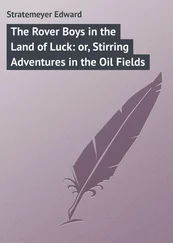Stephen Fry - The Ode Less Travelled - Unlocking The Poet Within
Здесь есть возможность читать онлайн «Stephen Fry - The Ode Less Travelled - Unlocking The Poet Within» весь текст электронной книги совершенно бесплатно (целиком полную версию без сокращений). В некоторых случаях можно слушать аудио, скачать через торрент в формате fb2 и присутствует краткое содержание. Жанр: Старинная литература, на английском языке. Описание произведения, (предисловие) а так же отзывы посетителей доступны на портале библиотеки ЛибКат.
- Название:The Ode Less Travelled: Unlocking The Poet Within
- Автор:
- Жанр:
- Год:неизвестен
- ISBN:нет данных
- Рейтинг книги:3 / 5. Голосов: 1
-
Избранное:Добавить в избранное
- Отзывы:
-
Ваша оценка:
- 60
- 1
- 2
- 3
- 4
- 5
The Ode Less Travelled: Unlocking The Poet Within: краткое содержание, описание и аннотация
Предлагаем к чтению аннотацию, описание, краткое содержание или предисловие (зависит от того, что написал сам автор книги «The Ode Less Travelled: Unlocking The Poet Within»). Если вы не нашли необходимую информацию о книге — напишите в комментариях, мы постараемся отыскать её.
The Ode Less Travelled: Unlocking The Poet Within — читать онлайн бесплатно полную книгу (весь текст) целиком
Ниже представлен текст книги, разбитый по страницам. Система сохранения места последней прочитанной страницы, позволяет с удобством читать онлайн бесплатно книгу «The Ode Less Travelled: Unlocking The Poet Within», без необходимости каждый раз заново искать на чём Вы остановились. Поставьте закладку, и сможете в любой момент перейти на страницу, на которой закончили чтение.
Интервал:
Закладка:

But that’s just plain silly: 27it is actually more like the metre of Browning’s ‘Ghent to Aix’: anapaests with the opening syllable docked.If wishes were horses then beggars would rideI sprangto the saddle and Joris and he.
Just as my amphibrachic doggerel could be called a clipped anapaestic line with a weak ending:Ro mantic, de luded, a total dis aster.Don’t doit I begyou, self- slaughter is faster
Some metrists claim the amphibrach can be found in English poetry. You will see it and hear it in perhaps the most popular of all verse forms extant, they say. I wonder if you can tell what this form is, just by READING OUT THE RHYTHM?
 Ti- tum-ti ti- tum-ti ti- tum-tiTi- tum-ti ti- tum-ti ti- tum-tiTi- tum-ti ti- tumTi- tum-ti ti- tumTi- tum-ti ti- tum-ti ti- tum-ti
Ti- tum-ti ti- tum-ti ti- tum-tiTi- tum-ti ti- tum-ti ti- tum-tiTi- tum-ti ti- tumTi- tum-ti ti- tumTi- tum-ti ti- tum-ti ti- tum-ti
It is, of course, the limerick.There was a young man from AustraliaWho painted his arse like a dahlia.Just tuppence a smellWas all very well,But fourpence a lick was a failure.
So, next time someone tells you a limerick you can inform them that it is verse made up of three lines of amphibrachic trimeter with two internal lines of catalectic amphibrachic dimeter. You would be punched very hard in the face for pointing this out, but you could do it. Anyway, the whole thing falls down if your limerick involves a monosyllabic hero:There was a young chaplain from King’s,Who discoursed about God and such things:But his deepest desireWas a boy in the choirWith a bottom like jelly on springs.Ti- tumtitty- tumtitty- tumTitty- tumtitty- tumtitty- tumTitty- tumtitty- tumTitty- tumtitty- tumTitty- tumtitty- tumtitty- tum
You don’t get much more anapaestic than that. A pederastic anapaestic quintain, 28 28in fact. Most people would say that limericks are certainly anapaestic in nature and that amphibrachs belong only in classical quantitative verse. Most people, for once, would be right. The trouble is, if you vary an amphibrachic line even slightly (which you’d certainly want to do whether it was limerick or any other kind of poem), the metre then becomes impossible to distinguish from any anapaestic or dactylic metre or a mixture of all the feet we’ve already come to know and love. Simpler in verse of triple feet to talk only of rising three-stress rhythms (anapaests) and falling three-stress rhythms (dactyls). But by all means try writing with amphibrachs as an exercise to help flex your metric muscles, much as a piano student rattles out arpeggios or a golfer practises approach shots.
T HE A MPHIMACER
It follows that if there is a name for a three-syllable foot with the beat in the middle (ro mantic, des pondent, un yielding) there will be a name for a three-syllable foot with a beat either side of an un stressed middle ( tamper proof, handto mouth, Oxford Road). 29Sure enough: the amphimacer ( macro , or long, on both sides) also known as the cretic foot (after the Cretan poet Thaletas) goes tum-ti- tumin answer to the amphibrach’s ti- tum-ti. Tennyson’s ‘The Oak’, which is short enough to reproduce here in full, is written in amphimacers and is also an example of that rare breed, a poem written in monometer, lines of just one foot. It could also be regarded as a pattern or shaped poem (of which more later) inasmuch as its layout suggests its subject, an oak tree.Live thy life,Young and old,Like yon oak,Bright in spring,Living gold;Summer-richThen; and thenAutumn-changed,Soberer huedGold again.All his leavesFall’n at length,Look, he stands,Trunk and bough,Naked strength.
Alexander Pope a century earlier had written something similar as a tribute to his friend Jonathan Swift’s Gulliver’s Travels :In amazeLost I gazeCan our eyesReach thy size?
…and so on. Tennyson’s is more successful, I think. You won’t find too many other amphimacers on your poetic travels: once again, English poets, prosodists and metrists don’t really believe in them. Maybe you will be the one to change their minds.
Q UATERNARY F EET
Can one have metrical units of four syllables? Quaternary feet? Well, in classical poetry they certainly existed, but in English verse they are scarce indeed. Suppose we wrote this:

That’s a hexameter of alternating pyrrhic and spondaic feet and might make a variant closing or opening line to a verse, but would be hard to keep up for a whole poem. However, you could look at it as a trimeter :

The name for this titty- tum-tumfoot is a double iamb , sometimes called an ionic minor . Again, these are incredibly rare in English poetry. One such foot might be used for emphasis, variation or the capturing of a specific speech pattern, but it is never going to form the metrical pattern for a whole poem, save for the purposes of a prosodic equivalent of a Chopin étude, in other words as a kind of training exercise. Whether you call the above line an ionic minor or double iambic trimeter, a pyrrhic spondaic hexameter or any other damned thing really doesn’t matter. Rather insanely there is a quaternary foot called a diamb , which goes ti- tum-ti tum, but for our purposes that is not a foot of four, it is simply two standard iambic feet. Frankly my dear, I don’t give a diamb. Some people, including a couple of modern practising poets I have come across, like the double iamb, however, and would argue that the Wilfred Owen line I scanned as a pyrrhic earlier:

Should properly be called a double iamb or ionic minor since ‘good-bye’ is double-stressed:

Well, hours of lively debate down the pub over that one. We will tiptoe away and leave them to it.
You may have guessed that if a double iamb or ionic minor goes titty- tum-tum, then an ionic major might well do the opposite: tum-tum-titty, tum-tum-titty:  : ‘ make muchof it’, that sort of rhythm: Lee Harvey the lone gunman, did cold heartedly Shoot fatally John Kennedy: poor Jacqueline.
: ‘ make muchof it’, that sort of rhythm: Lee Harvey the lone gunman, did cold heartedly Shoot fatally John Kennedy: poor Jacqueline.
Интервал:
Закладка:
Похожие книги на «The Ode Less Travelled: Unlocking The Poet Within»
Представляем Вашему вниманию похожие книги на «The Ode Less Travelled: Unlocking The Poet Within» списком для выбора. Мы отобрали схожую по названию и смыслу литературу в надежде предоставить читателям больше вариантов отыскать новые, интересные, ещё непрочитанные произведения.
Обсуждение, отзывы о книге «The Ode Less Travelled: Unlocking The Poet Within» и просто собственные мнения читателей. Оставьте ваши комментарии, напишите, что Вы думаете о произведении, его смысле или главных героях. Укажите что конкретно понравилось, а что нет, и почему Вы так считаете.










